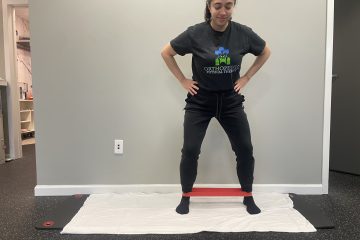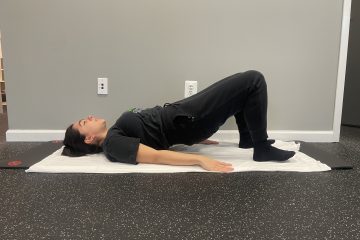What is a rectocele?
A rectocele is a condition where the tissue wall between the vagina and rectum weakens, and subsequently a bulge forms from the rectum into the vaginal opening.
What causes a rectocele?

Prolonged pressure on the rectum or posterior vaginal wall, prolonged pushing during childbirth (accompanied by tearing especially), and chronic constipation can all cause a rectocele.
What are common symptoms of a rectocele?
- Pain or pressure in the rectum
- Pain w/ intercourse (especially in positions in contact with the back vaginal wall)
- Feeling like something is protruding into the vagina and/or vaginal bulging
- Constipation
- Inability to fully empty bowels
What do we do in pelvic floor physical therapy to help?
- Manage bowel movements and constipation—difficulty with both can make your rectocele worse, so we have to get you having consistent and easy to pass bowel movements. We do this through…
- Colon massage
- Teaching breathing mechanics when pushing and pooping
- Introducing a squatty potty
- Making water and dietary recommendations
- Lengthen the tissue surrounding the rectocele to reduce pressure. We do this through…
- Lengthening the pelvic floor muscles, hips, low back, and glutes through manual techniques, cupping, as well as guided stretching (both dynamic and static)
- Strengthen the tissue surrounding the rectocele. We do this through…
- Working to gradually load the tissue of the glutes, hips, and pelvic floor muscles (fun fact, some of the most wonderful activities for building pelvic floor, glute, and hip strength are low-rep, heavy-weight exercises like deadlifts and back-squats, but we build up to these).
- Potential recommendation of a pessary to help prevent the rectocele from worsening.
- A pessary is a small medical device inserted vaginally that can help hold up the vaginal wall (we also sometimes recommend these for bladder prolapses so that patients don’t feel the heaviness from the descending pelvic organ).
- A pessary should be fitted and inserted by a physician.
- Potential recommendation of “splinting” to allow bowels to be emptied more fully.
- “Splinting” is a technique used to better empty bowels when a rectocele is present. In order to use this technique, insert fingers vaginally and press up on the back vaginal wall while bearing down to poop. You can also press up on the perineal body to help evacuate stool.
If any of the symptoms we’ve described fit you, please take heart and take hope in the fact that there are so many things we can do so that you aren’t experiencing those symptoms and so the rectocele doesn’t worsen. Like a prolapse, a rectocele isn’t something that can be “fixed,” but it can be managed in a way that drastically improves your quality of life.
Curious to learn more about rectocele and other pelvic health issues? Book a FREE 10-minute consult call today. We know we can help you ✨
Be empowered in education,
OrthoPelvic Physical Therapy


